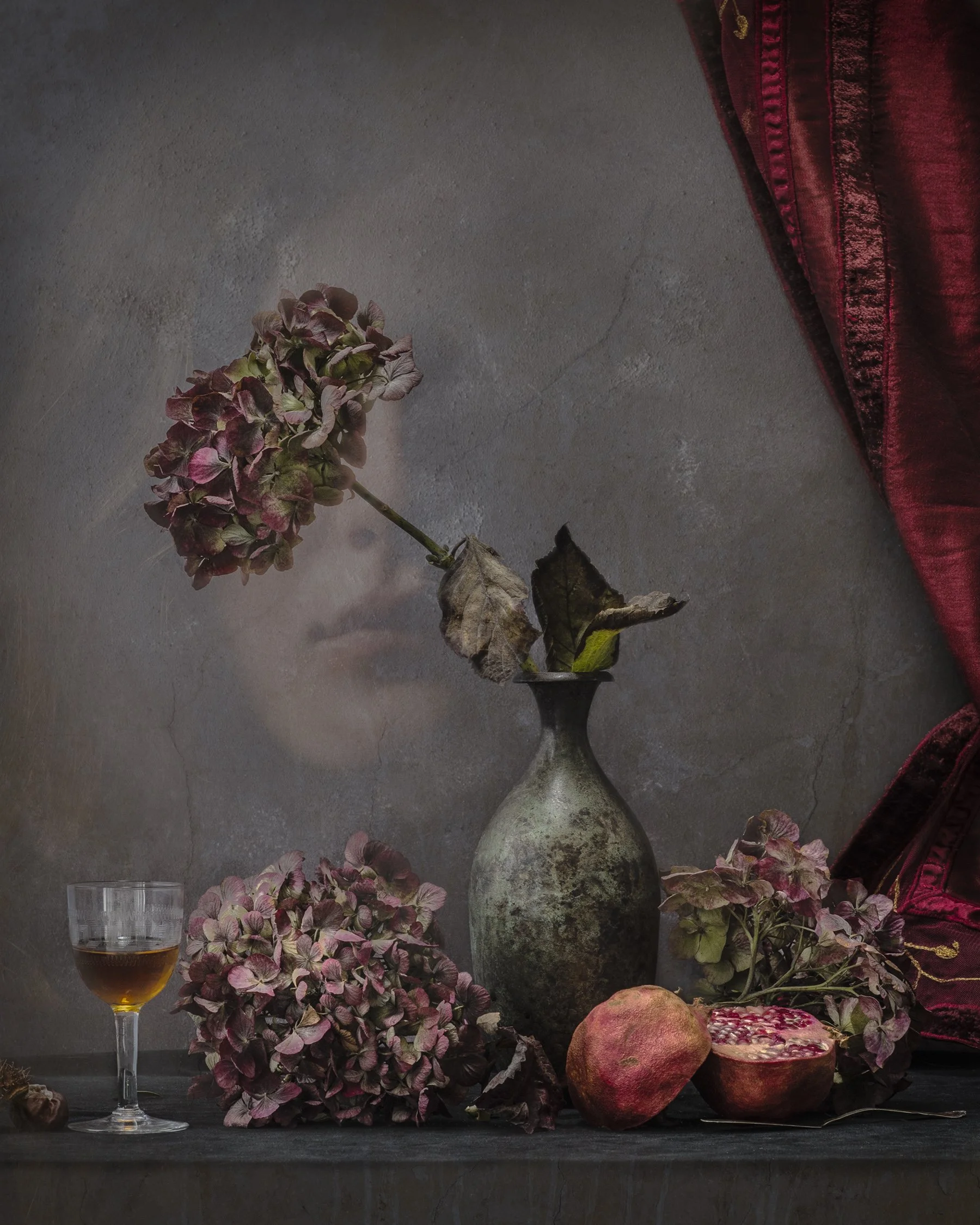Hecate or Elpis ( Hell or Hope), tulips and hellebores. The Hellebore, beautiful flowers that look like wild roses or large buttercups, however, as the name suggests looks can be deceptive as this flower has a very sinister past. In legend and folklore this flower is full of dangers, mysteries and excitement. Whilst Ancient herbalists occasionally used hellebore to heal, its primary role was more sinister. It was most often used as a poison. Its victims suffering nausea, vomiting, slowed heart rate, swelling of the tongue and throat - cardiac arrest. Its magical history is also disturbing with strong links to witchcraft and insanity. Hellebore can also mean hope with the deadly blossoms emerging on dark winter from beneath winter snow as an indicator that spring is not far away. This images conjures the power of the hellebore over the wilting tulips, seemingly poisoned by its mystical power.
Carpo, Autumn, pomegranate, wine, richness and lusciousness of Autumn, goddess of fruits and the earth, personification of Autumn. Carpo, represented the time of ripening and abundance, the goddess of the fruits and the earth. This overlaid image is a vision of of Carpo ruling over the season of Autumn ensuring that nature and life’s order is kept and strengthened. The presents of wine, luscious pomegranate and opulent decor give thanks for the harvest and the wealth of good fortune. The hydrangea represents gratitude, grace and beauty due to the lavish number of flowers and the generous round shape for love, harmony and peace.
The Yellow Iris. Iris was known to be the goddess of the rainbow and a messenger of the gods, serving as a link between the heavens and the mortal world - the yellow colour representing the sun bringing warmth and light to the world. The goddess Iris is often depicted with wings and a golden yellow robe said to be made from the petals of the flower. The yellow iris is also related to the solar plexus chakra, associated with personal power, confidence, courage and a connection to your spiritual journey, growth, and enlightenment including a symbolic attachment to the Holy Spirt as its radiant light.
Proteus, King Proteus Flower. The Protea is among the oldest families of flowers on earth dating back 300 million years. Greek Legend tells us that protea were named after Proteus , the son of Poseidon, the sea god who had the power to know all things past, present and future. Proteus was defiant and preferred to nap on the island of Pharos rather than prophesize and to deter those seeking his insights he would change shape at will and its said that the protea flower was named after him because it, too presents itself in an astounding variety of shapes and sizes, hues and textures making up more that 1400 varieties. This is the king variety, symbolising in the language of flowers diversity and courage.



